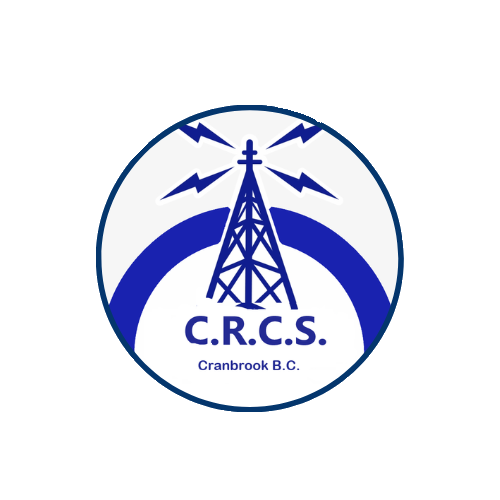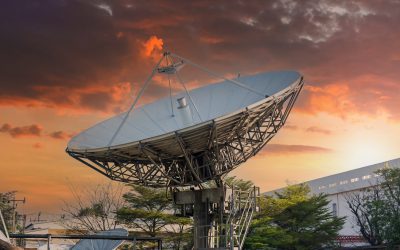Ham radio, also known as amateur radio, is a fascinating hobby that connects enthusiasts across the globe. One of the most exciting aspects of ham radio is the ability to use it for satellite communications, enabling operators to talk to space. This blog will delve into the intricacies of using ham radio to communicate via satellites, explore the necessary equipment, and provide a guide on how to get started with satellite communications.
What is Ham Radio?
Ham radio is a form of amateur radio that allows licensed operators to communicate with each other over various frequencies. It is used for personal enjoyment, emergency communication, and experimentation with radio technology. Ham radio operators, or “hams,” use a wide range of frequencies allocated by the Federal Communications Commission (FCC) or equivalent regulatory bodies in other countries.
What Are Satellite Communications in Ham Radio?
Satellite communications in ham radio involve using satellites as repeaters to relay signals between operators on Earth. These satellites, known as amateur radio satellites or “birds,” are specifically designed to facilitate communication between ham radio operators. The concept of using satellites for ham radio communication significantly expands the range and capabilities of traditional ground-based operations.
The Basics of Satellite Communications
Using ham radio to talk to space requires an understanding of several key concepts:
- Uplink and Downlink: Uplink refers to the signal sent from the ground station (your ham radio setup) to the satellite. Downlink is the signal transmitted from the satellite back to Earth.
- Doppler Shift: The change in frequency caused by the relative motion between the satellite and the ground station. Operators must adjust their frequencies to account for this shift.
- Footprint: The area on Earth where the satellite’s signal can be received. The footprint moves as the satellite orbits the Earth.
Equipment Needed for Satellite Communications
To start using ham radio for satellite communications, you need specific equipment:
Radio Transceiver
A dual-band radio transceiver capable of operating on VHF (Very High Frequency) and UHF (Ultra High Frequency) bands is essential. Many amateur satellites use these frequency bands for communication. Examples of suitable transceivers include the Icom IC-9700, Yaesu FT-991A, and Kenwood TS-2000.
Antennas
Directional antennas, such as Yagi or log-periodic antennas, are recommended for satellite communication. These antennas provide the necessary gain and directivity to establish a reliable link with the satellite. Handheld directional antennas like the Arrow Antenna and Elk Antenna are popular choices for portable operations.
Tracking Software
Satellite tracking software is crucial for knowing the current position and trajectory of satellites. Programs like Orbitron, SatPC32, and AMSAT’s PREDICT provide real-time tracking information, including pass times, elevation angles, and Doppler shift calculations.
Rotator System
For fixed station setups, a rotator system is used to automatically adjust the antenna’s position to track the satellite’s movement across the sky. This ensures optimal signal reception and transmission.
Pre-amplifiers and Filters
Pre-amplifiers enhance the weak signals received from satellites, improving the overall signal-to-noise ratio. Band-pass filters help eliminate interference from nearby frequencies, ensuring clear communication.
Getting Started with Satellite Communications
Step 1: Obtain the Necessary Licenses
Before you can operate on amateur satellites, you need to obtain the appropriate ham radio license. In the United States, the FCC issues these licenses. The Technician Class license is the entry-level license that allows access to VHF and UHF frequencies used for satellite communication.
Step 2: Choose the Right Satellite
Not all amateur satellites are the same. Some are designed for voice communication, while others are used for data transmission, telemetry, or experimental purposes. Popular amateur satellites for voice communication include AO-91 (Fox-1B), AO-92 (Fox-1D), and SO-50.
Step 3: Set Up Your Station
-
- Radio Transceiver: Ensure your transceiver is capable of full-duplex operation, allowing you to transmit and receive simultaneously. This is important for satellite communication to monitor your own transmission.
- Antenna System: Set up your directional antenna and connect it to your transceiver. For portable operations, handheld directional antennas are mounted on tripods or held manually.
- Tracking Software: Install and configure satellite tracking software on your computer or mobile device. Enter the relevant satellite data and monitor the satellite’s passes over your location.
- Rotator System: If using a fixed station, integrate a rotator system with your antenna setup. Calibrate the rotator to align with the tracking software for automatic satellite tracking.
Step 4: Listen Before Transmitting
Start by listening to the downlink frequency of the satellite you plan to communicate through. This allows you to become familiar with the satellite’s signal and traffic patterns. Pay attention to the satellite’s pass times and elevation angles to plan your transmission windows.
Step 5: Make Your First Contact
-
- Frequency Adjustment: Account for Doppler shift by adjusting your transceiver’s frequency during the satellite pass. Start with a higher frequency and gradually lower it as the satellite approaches, then increase it as the satellite moves away.
- Call Sign Identification: Use standard ham radio procedures, including calling CQ (general call) or responding to other operators’ calls. Identify yourself with your call sign and location.
- Record Keeping: Log your contacts, including the date, time, satellite used, and call signs of stations contacted. This helps track your progress and achievements in satellite communication.
Best Practices for Satellite Communications
Respect the Band Plan
Amateur satellite operators should adhere to the designated frequency allocations and modes of operation for each satellite. This ensures efficient use of the limited bandwidth and minimizes interference with other users.
Monitor and Adjust for Doppler Shift
Continuously monitor and adjust your frequencies to account for Doppler shift during the satellite pass. This helps maintain clear and reliable communication.
Use Low Power
Amateur satellites have limited power resources, so using low power settings (QRP) helps conserve these resources and reduces the risk of interference with other operators.
Share Your Knowledge
Engage with the amateur radio community by sharing your experiences and knowledge about satellite communications. Participate in forums, attend club meetings, and contribute to online discussions to help others get started and improve their skills.
Benefits of Using Ham Radio for Satellite Communications
Global Reach
Satellite communications enable ham radio operators to make contacts with stations worldwide, far beyond the range of traditional ground-based communications.
Technical Skill Development
Working with satellites enhances your technical skills and knowledge in areas such as radio propagation, antenna design, and digital communication modes.
Community and Collaboration
The amateur satellite community is a vibrant and collaborative group. Engaging in satellite communications allows you to connect with like-minded enthusiasts and participate in joint projects and events.
Emergency Communication
Amateur satellites can play a critical role in emergency communication, providing a reliable means of communication when traditional infrastructure is compromised.
Using ham radio to talk to space through satellite communications is an exciting and rewarding aspect of the hobby. By understanding the necessary equipment, obtaining the required licenses, and following best practices, you can successfully engage in satellite communication and expand your ham radio experience.




